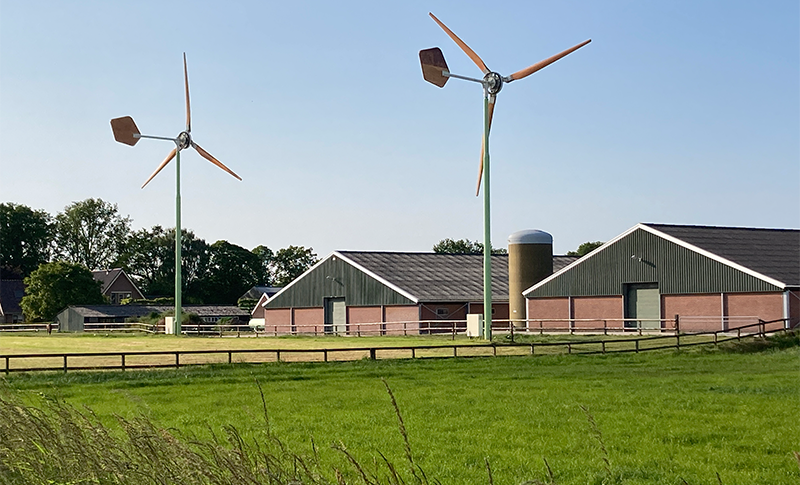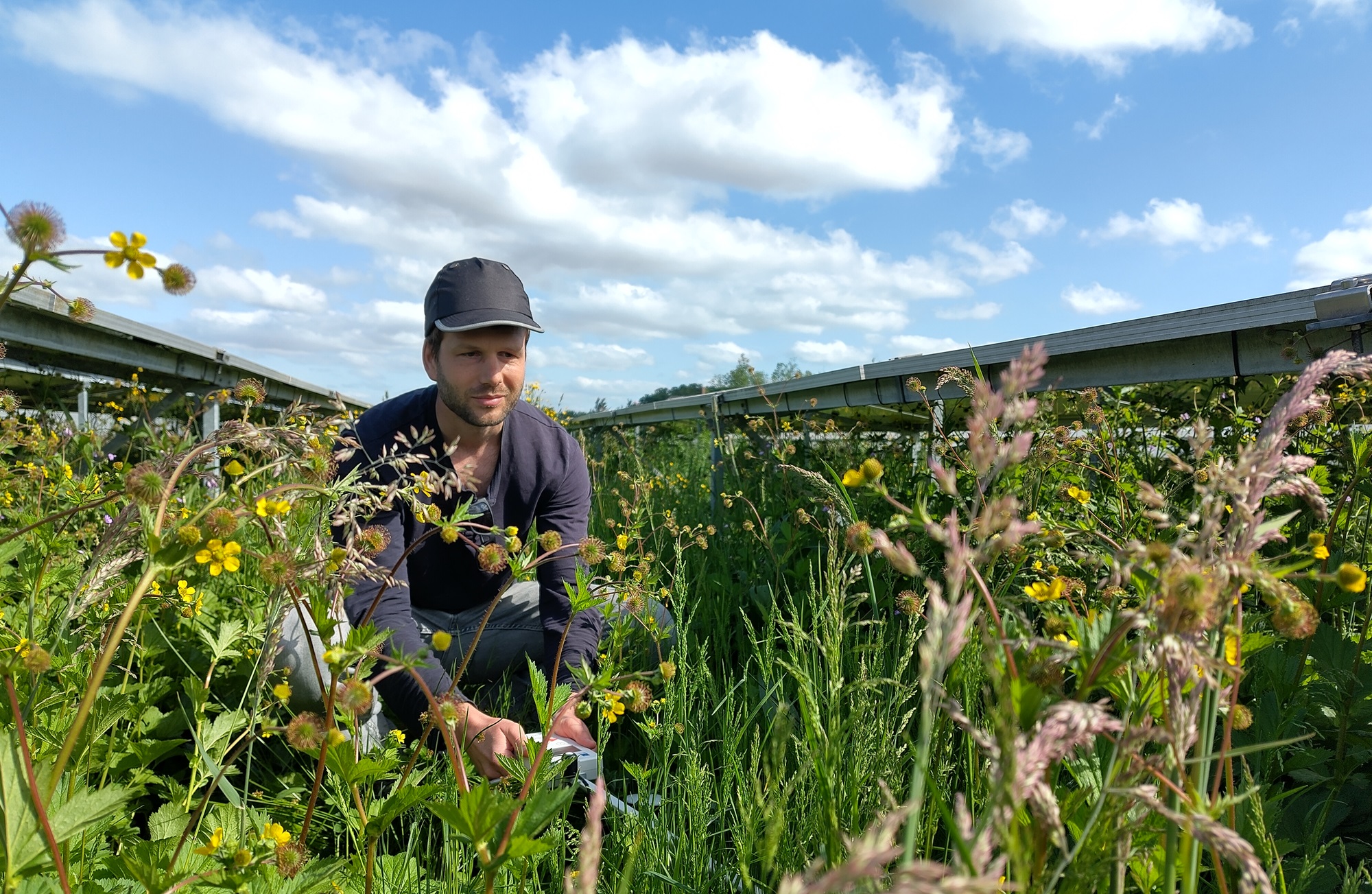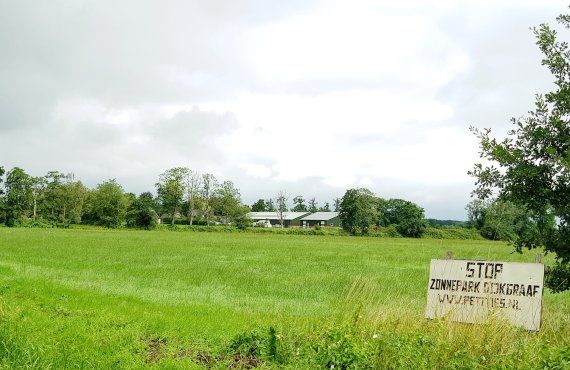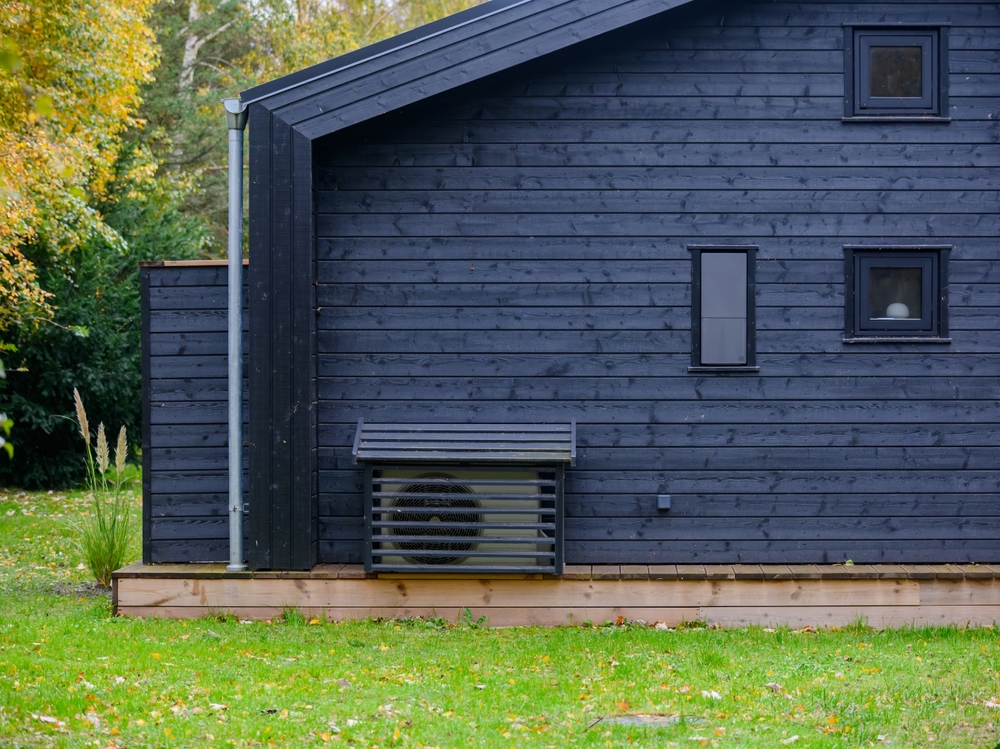Agriculture and horticulture have high hopes of the energy transition — and vice versa. WUR researchers agree there are plenty of opportunities. But there are also the inevitable pitfalls.
Organic dairy farm De Roodheuvel in the Achterhoek region recently had reason to celebrate. After a nerve-racking preparation phase — did the electricity grid have enough capacity? — it was able to start using the 258 solar panels on the barn roof. The panels are an initiative of De Groene Draad, a local residents’ energy cooperative that also owns the solar panels.
A few kilometres away, poultry farmer Hoftijzer has two small wind turbines for its barns. But the turbines, which cost some 40,000 euros each, have not operated for months. The province revoked the permit that the municipality had issued. Local residents had objected to the nature assessment that accompanied the permit application and the provincial authority says they had a point. There is still no sign of a solution.
Farmers as energy producers
These two real-life examples are illustrative of ‘the energy transition in the farmyard’, the subject of a recent edition of WUR Live, an online discussion programme by WUR and the ministry of Agriculture on topical policy issues. Ministry policy officer Tim Lohmann explained that the ministry of Agriculture sees a lot of opportunities for farmers in the energy transition. Not so much from leasing their land for solar farms — however lucrative that may be — but through smart combinations of farming with the production of sustainable energy, whether electricity, green gas or hydrogen.
An increasing numbers of farmers is getting involved in energy production
There is certainly plenty of demand for that energy, explained Lohmann. The government expects electricity consumption to increase by a factor of five over the next three decades, from about 120 TWh (terawatt hours) now to around 500 TWh in 2050.
Rural areas
But are farmers really the energy producers of the future, as this event claimed? Rural areas certainly have an important role to play in the national energy supply, said Jeroen Sluijsmans. He is the programme developer for the Wageningen Solar Research Programme and he was involved in the ‘energy in the farmyard’ quick scan that WUR carried out for the ministry at the start of the year. Rural areas are already net producers of energy, meaning agriculture generates more than it consumes. Of the 35 TWh the energy regions need to generate energy sustainably on land by 2030, as agreed in the Climate Agreement, 66 per cent is supposed to come from rural areas, said Sluijsmans.
As he explained, many farmers are keen to seize this opportunity and supplement their farm income by generating sustainable energy. ‘We see increasing numbers of farmers getting involved in energy production, not just for their own farm but to supply other people too.’ That is clear too from the figures. According to Statistics Netherlands, in 2020 about 3500 farmers were generating energy for consumption by others, three times as many as in 2016. That number is still growing, as the example of De Roodheuvel shows. And given that there are 50,000 farms in the Netherlands, there are many more potential producers.
Agricultural initiatives
Sluijsmans discussed various promising rural energy initiatives. For example, there are initiatives with solar panels in arable farming, semi-permeable panels are being used in the cultivation of soft fruits and there are pilots with vertical panels and systems that track the sun on grassland. He also mentioned the two hundred farmers who set up the Zeewolde wind farm with 83 turbines last summer in a collective with local residents. This is currently the Netherlands’ largest wind power project on land; it is able to generate 320 megawatts, enough to supply 300,000 households with electricity. Another success story is an initiative in livestock farming in which fresh manure fermentation, which provides biogas, is combined with the production of fertilizer substitutes. That is done by extracting minerals from the digestate, the residual product from the manure fermentation.
Obstacles
It became clear in the discussion that many farmers still find the energy market difficult to get into. For example, farmers sometimes lack the knowledge and expertise required to make the right choices. There are also the familiar obstacles that farmers and others regularly encounter: a lack of capacity in the electricity grid, complex and lengthy permit procedures and obstructive regulations. The regulations are a particular problem for the small-scale production of hydrogen. On paper that looks promising, and WUR is already researching this with TNO in Lelystad, but there are legal issues for instance, making it tricky in practice.
Both Sluijsmans and Lohmann agreed that if the Netherlands wants farmers to play a bigger role as energy producers, that role needs to be acknowledged in government policy — for example the National Programme for Rural Areas (NPLG) or the energy policy. Lohmann was able to report that work has started on this. At any rate, there will soon be a national information document for permit granting organizations. That will be too late for poultry farm Hoftijzer, but hopefully it will spare future energy farmers similar headaches.
Agro-energy event in Bleiswijk
On 7 June, WUR is organizing the EnergiekEvent 2023 in Bleiswijk, all about energy in greenhouse horticulture. Greenhouse horticulture will also play an important role in the energy transition. To give an indication, the combined heat and power systems in greenhouse horticulture already provide the equivalent of about 10 per cent of the national electricity consumption, as was mentioned during a WUR Live session on this topic. To register for these events, go to accres.nl and wur.nl respectively. The abovementioned editions of WUR Live can be viewed via the intranet group of the same name.

 On poultry farmer Hoftijzer’s land in the Achterhoek region, two small wind turbines have stood unused for months because the provincial authority revoked the permit after objections from local residents. Photo Resource
On poultry farmer Hoftijzer’s land in the Achterhoek region, two small wind turbines have stood unused for months because the provincial authority revoked the permit after objections from local residents. Photo Resource 

